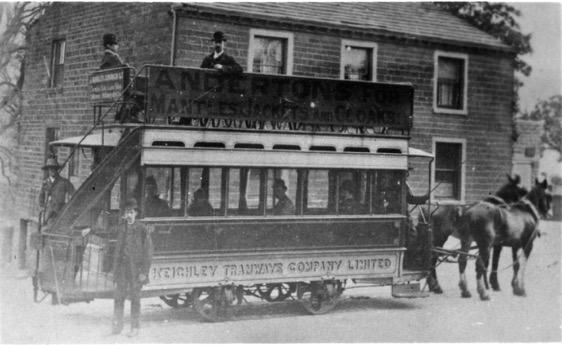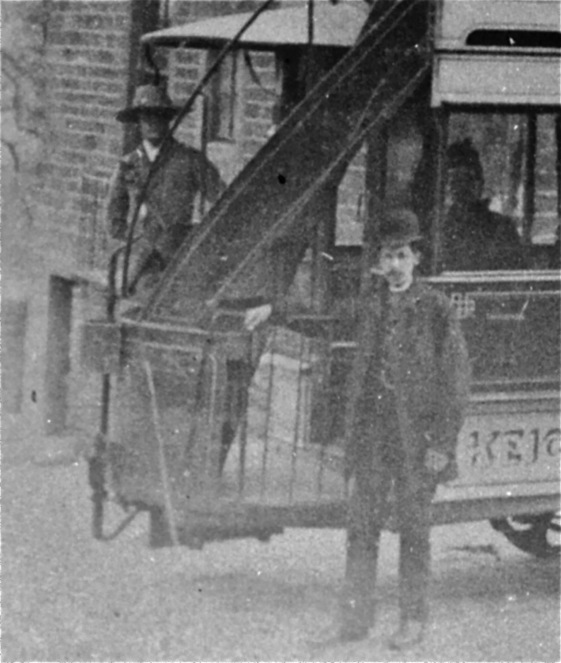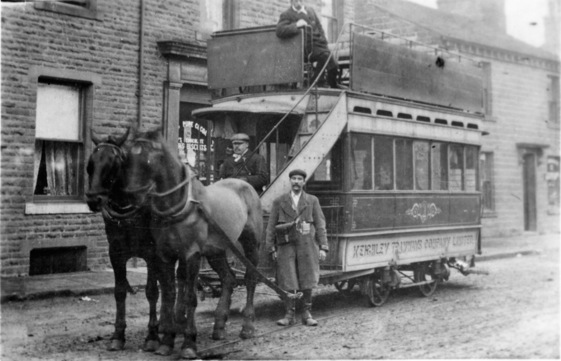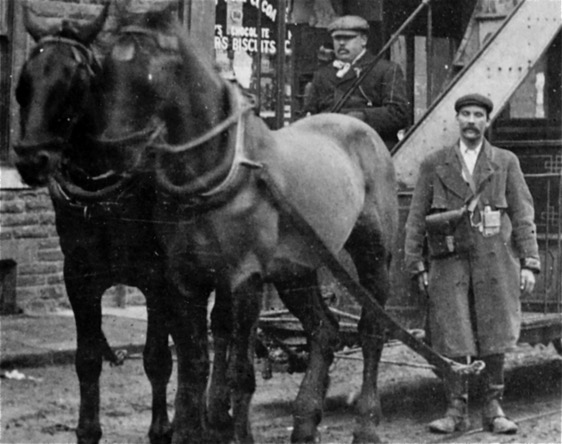Keighley Tramways
History
Keighley's 4ft-gauge, horse-drawn tramway, which was owned and operated by the Keighley Tramways Company Limited, opened for business on the 8th May 1889.
The tramway company was a local affair, with many of those involved also serving as councillors, something which no doubt smoothed the path of civic approval, this being secured in October 1887. Parliamentary powers for the line were obtained the following year, with construction commencing in early 1889.
At its maximum, the system totalled just 2.28 miles. It was opened in two sections, the first on the 8th of May 1899 ran southwards from Church Green (in Keighley), along South St to a terminus at Paper Mill Bridge in Ingrow; this was joined on the 18th December 1889 by a line running northwards from Church Green, via North St and Skipton Rd, to a terminus at the cemetery in Utley. Both lines were extended around 10 years later (circa 1897), but only by a very short distance, the Ingrow line to Ingrow Bridge, and the Utley line to the Roebuck Inn. Both lines were operated separately, but with a common terminus in North St in Keighley.
Unfortunately, the tramway was a loss-making venture from the start, income failing to even cover the operating costs, let alone to create anything as a grand as a renewals fund. As a result, the tramway infrastructure gradually deteriorated to the point where the company could not afford to pay Keighley Corporation for work done on maintaining the paving around the track; at this juncture, and in order to stave off bankruptcy, the company offered to sell the undertaking to the corporation, though it can hardly have been an enticing prospect. Eventually agreement was reached (on the 25th November 1896) for the corporation to buy the track — for a nominal fee of £5 — and then lease it back to the company, the deal being back-dated to the 1st July 1896.
Soon afterwards however, the corporation's thoughts turned to the new wonder of electricity, and in 1898 it obtained parliamentary powers to convert and extend the horse tramway, opening its own electricity generation plant in 1900. Despite a degree of civic opposition, a not entirely unreasonable stance given that the horse tramway had never made a profit, the corporation agreed a price for the company's remaining tramway assets, taking possession on the 15th January 1901; the company however continued to work the tramway, the corporation paying them an agreed price per horse per week to do so. The corporation finally took over operation on the 21st September 1901, following which, the company was wound up.
Uniforms
The Keighley Tramways Company operated horse trams for just over 12 years: from 1889 to 1896 as the owner, and from thence until 1901 as the lessee. In common with the majority of horse tramways in the British Isles, drivers and conductors simply wore informal attire — trousers, overcoats, jackets, waistcoats, shirts and ties. Headgear appears to have largely followed the fashion of the day, primarily the bowler hat, but later on the flat cap. No badges or licences of any kind were worn, either on the jackets or the hats.
Photographs of inspectors have so far yet to come to light, and in view of the small size of the system, it is entirely possible that the company never saw fit to employ them.
Further reading
For a history of the system, see: Keighley Corporation Transport by J S King; The Advertiser Press Limited (1964).
Images
Horse tram drivers and conductors
A Keighley Tramways Company horse tram captured for posterity outside the Roebuck Inn, the terminus of the Utley line — photo undated, but as the extension to this location only opened in 1897, probably taken at that time or very shortly thereafter. Photo courtesy of the Tramways and Light Railway Society, with thanks to David Voice.
A blow-up of the above photo showing the conductor (at the back with cash bag), who appears to be wearing rather bohemian headgear for a provincial northern town. He must have stuck out a mile in the sea of bowler hats and flat caps.
Horse Tram No 1 pictured near Corn Mill Bridge (probably) — photo undated, but given the condition of the vehicle, probably taken in the late 1890s. Photo courtesy of the Tramways and Light Railway Society, with thanks to David Voice.
A blow-up of the above photo showing the driver and conductor, whose workaday and slightly down-at-heel appearance no doubt reflected the financial state of the company in its latter years.